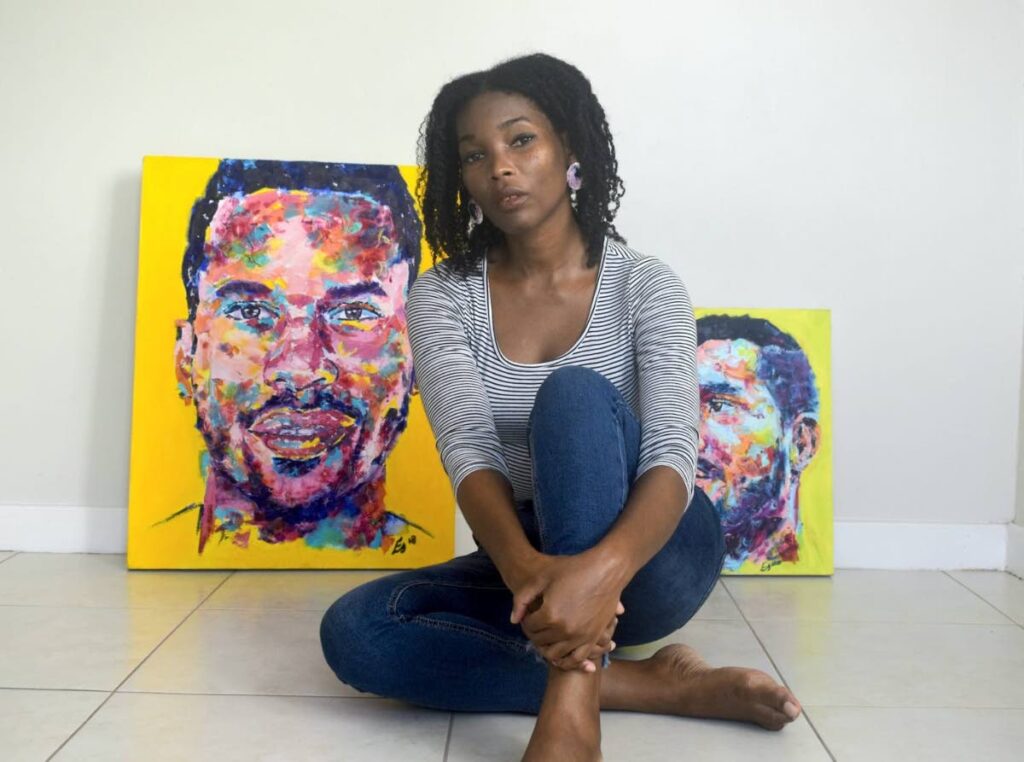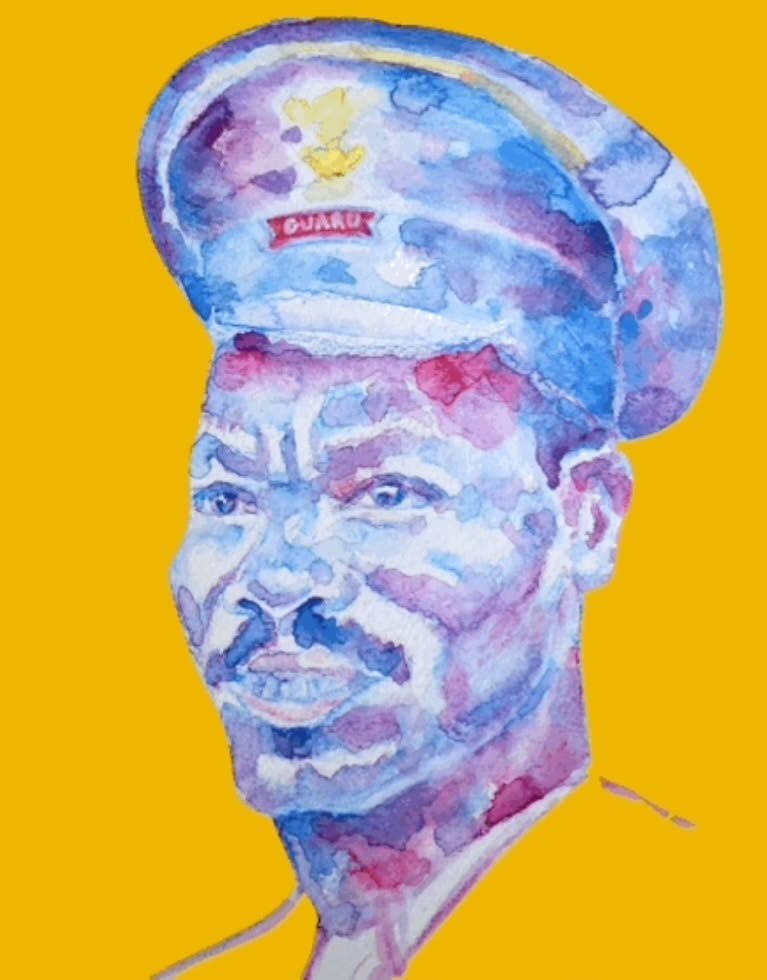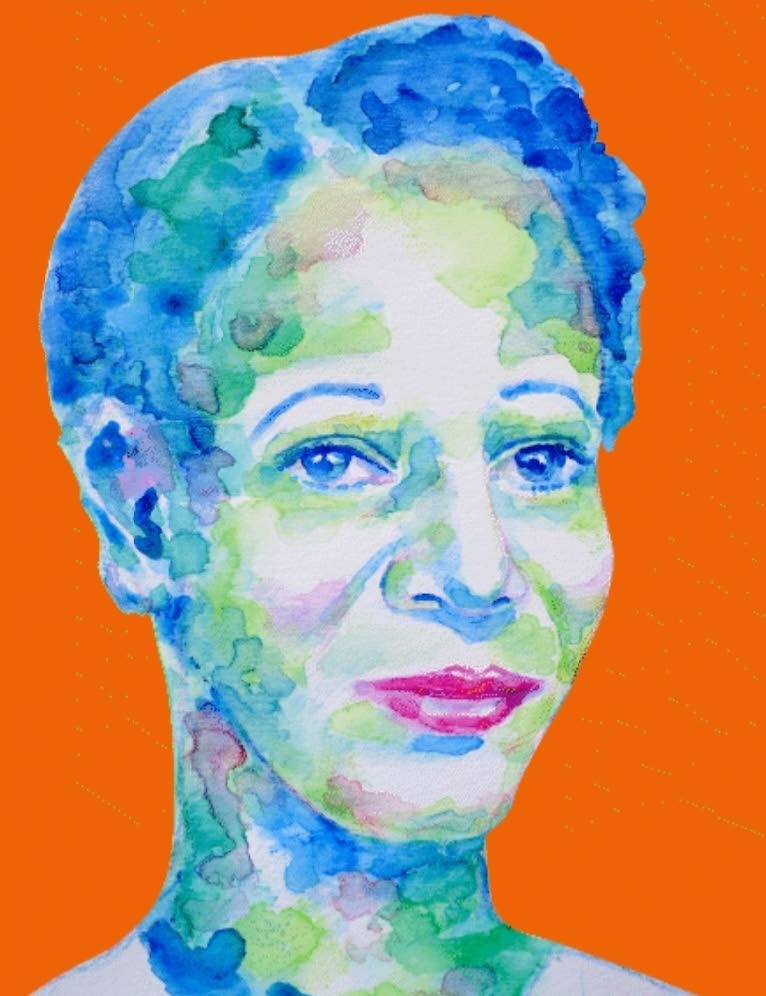Trini artist highlights Caribbean hidden figures in Wiki Unseen Project

The Wiki Unseen project, created by the Wikimedia Foundation, is intended to help spread global awareness of people from under-represented backgrounds who have made a profound impact on a range of industries and fields of study on a global scale.
The creators of the project define it not merely as a project but rather as a promise.
The project's website says the project is "a promise to show the world the people who have shaped the world, but were systematically erased from knowledge spaces. People whose images were taken out of the picture. Our goal is to redraw those within the global majority — including black people, people of colour, and indigenous peoples – back into history, one image at a time."
Among the three artists hand-picked by the team from thousands of submissions is Trinidad and Tobago artist Esther Griffith. Other artists featured in the first instalment of the project are Ghanaian artist based in Accra, Enam Bosokah and New York-based artist Bukhtawar Malik.

Griffith, who is from St James, Port of Spain, has been a painter and illustrator for over ten years, specialising in portraiture and was a recipient of the Emerging Leaders of the Americas scholarship from the government of Canada.
Griffith's work has been exhibited both in TT and in Canada and has been bought by collectors from TT, Canada, and the US.
Griffith has painted watercolour portraits of Caribbean people who were outstanding in their fields within and outside the region, namely, Jamaican astronomy and astrophysics professor Mercedes Tharam Richards and Asquith Camile Xavier, a Dominica-born Briton whose relentless efforts saw the ending of a colour bar at British Railways and became the first non-white train guard at the Euston railway station in 1966.
Griffith also did a portrait of Trinidadian women’s-rights activist and community worker Leonora Pujadas-McShine, who founded the League of Women Voters in TT.
Griffith said she received a list of potential subjects from the organisers of the project, from which she chose the three. The list included documentary filmmaker and pioneer of African-American filmmaking William Greaves, African-American poet, playwright/educator May Miller, Ugandan linguist, scholar and literary theorist Pio Zirumu and Ghanaian biochemist Marian Ewurama Addy.
"I really took to them after reading about them, (because of) their willingness to stand up in the face of prejudice, like in the case of Asquith, and the humility and kindness Mercedes embodied even though she was brilliant."
Asked how she felt when she was approached by the Wiki Unseen Project, Griffith said she was pleasantly surprised that the project co-ordinators were fascinated by her work.

"I was shocked that they chose my work. That was the first thought.
"But when I heard more about the premise of the project – giving a face to the faceless – people who are supposed to be recognised for their work but we hear nothing about or can hardly find a picture of them online – I felt like it was a meaningful project that I wanted to be part of."
Griffith said its meaning runs deep and she is humbled to be part of a project that has inclusion at its core.
"I try to be diverse in my approach to subjects that I paint. I like being inclusive. I love the variation in races and cultures. and the fact that I'm playing a part in helping people from marginalised communities and cultures to be seen was a big deal for me."
Asked about the guidance system used in the creation of the pieces she produced for the project, Griffith said there were a few. She said Wikimedia supplied participants with extensive detail on each subject based on research.
"They helped us learn about the personality and work done by each individual along with images of them." Information from research done influenced things like colour selection, which Griffith said plays a great role in her work. "I think colour communicates a lot about the subject being depicted. So when I learned about them, I would select colours that I thought best communicated their personalities."
She chose watercolour as her medium, which she said was most suitable because of the timeframe for submission. She said creating the pieces also included technical work such as getting high-resolution images which were then imported into image-editing software and background colours added.
Griffith said while she enjoyed creating her contributions to the project, it was not an easy task.
"A challenging part of it was capturing the spirit of the person and not just their likeness. You could draw someone and it could look like them, but it may not effectively give a feeling of who they are."
She sought to communicate the qualities for which each subject was known.
"Mercedes was an intelligent woman. Though a scientist, she was very creative and loved the arts. She was a lover of languages and music and had a joyfulness about her. I had to communicate that."
As for Asquith Camile Xavier, Griffith tried to capture his courage.
"We are talking about a man who braved death threats to be able to go to work every day to provide for his family. I had to depict his courage and inner strength."

Asked about the most rewarding part of working on the project, she said, "Getting the work out there and building awareness."
She said artists who have contributed to the project have had to the opportunity to share the stories of the subjects, some of their own stories and their creative processes – and hearing feedback from people who found the project interesting meant a great deal.
"Helping people learn about these people and what we can learn from them was rewarding."
Griffith said her formative years as an artist was organic.
"I grew up seeing my mother doing small sketches of people as a hobby. My siblings aren't artistically inclined. One of my brothers is, to an extent, but my other siblings work in logistics and accounting. I am the only one who branched off into the arts even though I was very interested in the sciences in high school. I was interested in how the world works, but as I grew up I returned to the arts."
She said even while doing the sciences, the parts that were most fun for her were tasks that called for her artistic touch, like drawing topography for geography or seeing colours change when chemicals react in the lab.
"It was not a straight path but I'm happy I found myself here."
She said the feedback on the Wiki Unseen Project has been rewarding.
"A lot of interest has been shown in not just me and my work, but the project. Seeing other artists voice their interest to participate has been wonderful."

Griffith said she looks forward to seeing greater balance in the sharing of knowledge and how stories are told.
"I wish to see more balance in whose stories are told, who tells these stories and how the stories are told despite people's colour, background, place in society. I am happy to be part of any initiative that gives opportunity for the unseen to be heard and seen.
Brand collaborations lead at the Wikimedia Foundation Tas Elias told Newsday, "At every moment in history there would have been an opportunity for Caribbean people and people of colour to be represented positively – but instead, they were systematically erased."
He said this erasure was most apparent during research he did on royalty from the continent of Africa.
"This is really where the Unseen project started. I realised only three Wikipedia articles had pictures of African royalty, out of about 30. So this project essentially seeks to address that issue as a start, by giving visual representation to a handful of biographies that have gone years without any visual representation. It was inspired by a desire to redraw history, and over the next few years we will hopefully collaborate with more volunteers and artists around the world to do that."
For more info on the Wiki Unseen Project visit its web page at https://wikimediafoundation.org/participate/unseen/

Comments
"Trini artist highlights Caribbean hidden figures in Wiki Unseen Project"